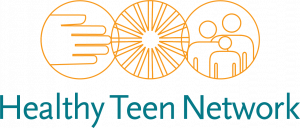What is an evidence-based intervention (also known as evidence-based program) anyway? You may know the definition—a specific kind of programming that has been evaluated to show behavior change—but what does that really mean? Evidence-based interventions and programs can expand or strengthen the programming you deliver in your community. Explore what evidence-based interventions are, what makes them different from other kinds of programs, and learn some of the basics for using evidence-based interventions effectively. Complete this course at your own pace.
Training Hub
The Sex Education Collaborative Training Hub lists trainings for sex educators, facilitators, and other professionals on best practices for sharing important information with clients and the public. From teaching anatomy inclusively to effectively addressing bias in the classroom to addressing racial justice and equity in sex education, the Training Hub includes trainings, technical assistance, and policy support from state, regional, and national leaders in the field of sex education.
Please note: The Training Hub includes both in-person and online professional trainings. If you see a training you are interested in and it isn’t listed as virtual, please reach out directly to any of our members to find out what's possible!
Trainings Offered by State-Based and National Organizations
Displaying results 96 - 100 of 137Evidence-Based Interventions
- Indicator 1 (K-12): Describe three health (e.g. physical, social and/or emotional) and/or academic benefits of sex education for young people
Pornography: Important Messages for Youth
In this training, participants will:
- Define sexually explicit media/material (SEM) and pornography.
- Identify 3-4 reasons why young people consume SEM.
- Identify 3-4 common concerns about SEM consumption for all ages and for youth specifically.
- Summarize existing evidence about SEM consumption, specifically as relates to youth.
- Utilize components of media literacy in conversations with youth about SEM.
- Identify 3-4 messages to share with youth regarding SEM.
- Indicator 1 (K-12): Explain three reasons why it is important to respond to every question students ask when teaching sex education.
- Indicator 2 (K-12): Demonstrate the ability to effectively respond to three different types of challenging questions. (S)
- Indicator 1 (K-12): Describe three health (e.g. physical, social and/or emotional) and/or academic benefits of sex education for young people
- Indicator 2 (K-12): Describe state and/or district laws, policies, and standards that relate to sex education where one teaches.
- Indicator 2 (K-12): Describe how verbal and nonverbal expression of personal values, and comfort with topics related to sex education, could impact one’s teaching
- Indicator 3 (K-12): Explain the importance of educators refraining from sharing their personal values when implementing sex education.
- Indicator 4 (K-12): Demonstrate the ability to respond effectively to students’ values-based comments and questions. (S)
Reaching the Adult Learner: The Science & Art of Masterful Facilitation
This session is intended for those who work with adult learners who wish to create a powerful learning environment that results in clients taking action. With adult learners, it’s often clear what to present, but how to present it may be more challenging. Participants explore the latest in professional development research, learning theory, and brain research as it relates to adult learners to understand how the human brain acquires, retains, and applies information. They examine proven models and strategies for designing effective events, facilitating diverse groups, and motivating learners to take action. Additionally, in the longer session, participants review and practice best strategies for managing and preventing difficult training issues, including resistant or unengaged participants.
Objectives of this course:
- Describe the research-based elements of effective training design and delivery.
- Identify best practices for reaching adult learners.
- Adopt a variety of facilitation techniques and strategies that engage and motivate learners.
- Employ strategies to manage discouraged and/or resistant participants.
- Identify resources for further study and practice.
- Initiate a personal plan of action to strengthen their facilitation skills.
Visit ETR's Training & TA Form to submit your request and receive cost information.
- Indicator 2 (K-12): Demonstrate three student-centered instructional approaches that support a variety of learning styles. (S)
- Indicator 4 (6-12): Demonstrate how to use the experiential learning cycle when teaching. (S)
Virtual PD - Increasing Personal Comfort When Teaching Sex Ed
Virtual Professional Development is a simulated classroom where teachers can practice teaching student avatars using short scenarios and support from an instructional coach, so they can quickly learn and master the skills they most need to be effective. With upper elementary, middle and high school classrooms, Virtual PD has scenarios for teachers of all grade levels across a wide range of topics aligned with the Professional Learning Standards for Sex Education (PLSSE). You can watch the video here to learn more about Virtual PD.
Using the Virtual Professional Development simulated classroom, the educator will practice Increasing Personal Comfort When Teaching Sex Ed with the student avatars. In this VPD scenario, the participant will conduct an activity about the physical changes of puberty with an established classroom community. In this simulation with the five students, the educator will ask students to engage in a think-pair-share activity to brainstorm three physical changes of puberty and then have both small groups report back. The participant will need to demonstrate personal comfort when leading this discussion with students.
- Indicator 1 (K-12): Demonstrate the ability to build rapport with students. (S)
Certificate in Adolescent Sex Education Basics from Rutgers University
The Rutgers University Graduate School of Applied and Professional Psychology (GSAPP) is now partnering with Answer to offer a certificate in Adolescent Sex Education Basics. This fully online, 50-hour, non-credit certificate includes eight dynamic and highly interactive workshops and four cutting-edge virtual classroom simulations.
The Rutgers University GSAPP certificate in Adolescent Sex Education Basics includes the following workshops and virtual classroom experiences:
- Workshop: Sexual Anatomy and Response: Getting Under Your Skin
- Workshop: Puberty and Adolescent Development: Growing Pains and Gains
- Workshop: Sexuality ABCs: Abstinence, Birth Control and Condoms
- Workshop: STD Basics: Helping Students Stay Sexually Healthy
- Workshop: LGBTQ Issues in Schools: Celebrating and Supporting Diversity
- Workshop: Pregnant & Parenting Teens: Beyond the Basics
- Workshop: Relationship Skills for Teens: Dating, Mating and Deliberating
- Workshop: Personal Safety: Knowing Signs and Drawing Lines
- Virtual classroom: Personal Comfort When Teaching Sexuality Education
- Virtual classroom: Culturally Responsive Instruction When Teaching Sexuality Education
- Virtual classroom: Trauma-Informed Sex Ed
- Virtual classroom: Tailoring Lessons to Meet Age and Developmental Levels
See https://answer.rutgers.edu/page/aseb_certificate_program/ for more information and FAQs about the certificate program.
- Indicator 1 (6-12): Explain fertilization, implantation, conception, and how pregnancy occurs.
- Indicator 2 (6-12): Demonstrate the steps necessary for effective external and internal condom use and how to access condoms. (S)
- Indicator 3 (6-12): Describe the differences in mechanisms of action and access between emergency contraception and the abortion pill.
- Indicator 4 (6-12): Explain methods of contraception, including the latest medical advances that are popular among young people.
- Indicator 5 (6-12): Describe pregnancy options, including parenting, adoption, and abortion.
- Indicator 6 (6-12): Identify three federal and/or state laws that impact young peoples’ access to effective reproductive and sexual health care (e.g. age of consent for services, confidential access to health care services, and access to condoms)
- Indicator 1 (K-12): Demonstrate three techniques to create an inclusive and affirming learning environment. (S)
- Indicator 5 (K-12): Describe three effective strategies for practicing skills with students.
- Indicator 1 (K-12): Describe three distinguishing characteristics between healthy and unhealthy relationships, involving family, friends, and/or romantic partners.
- Indicator 2 (K-12): Explain three ways that healthy relationships can positively impact personal well-being.
- Indicator 3 (K-12): Describe three strategies for teaching students communication skills.
- Indicator 4 (K-12): Describe three strategies for incorporating the positive and negative impacts of communicating through technology into lessons on healthy relationships.
- Indicator 5 (K-12): Describe three ways to help students set and respect personal boundaries in relationships.
- Indicator 1 (6-12): Describe HIV and three common STDs/STIs, and how each can and cannot be transmitted.
- Indicator 2 (6-12): Explain that many STD/STIs do not cause symptoms and the only way to know if you have one is to be tested.
- Indicator 3 (6-12): Explain the benefits of getting tested and treated for HIV and other STDs/STIs.
- Indicator 6 (6-12): Describe the latest medical advances in HIV and other STDs/STIs prevention and treatment.
- Indicator 7 (6-12): Identify three medically accurate and youth-friendly resources for STD/STI and HIV prevention, testing, and treatment
- Indicator 2 (K-12): Define sexual orientation and sexual identity, including that everyone has both.
- Indicator 3 (6-12): Explain the difference between sexual orientation, sexual behavior, and sexual identity.
- Indicator 5 (K-12): Demonstrate the ability to intervene effectively in homophobic and other bullying comments and actions. (S)
- Indicator 7 (K-12): Identify three credible, medically accurate, youth-friendly resources that can provide information or support related to sexual orientation.
- Indicator 1 (K-12): Describe how puberty prepares the human body for the potential to reproduce.
- Indicator 2 (K-12): List three physical, three social, and three emotional changes that occur during puberty.
- Indicator 2 (K-12): Demonstrate the ability to use medically accurate terms for sexual and reproductive anatomy, including all external genitals. (S)
- Indicator 3 (K-12): Explain the function of the individual sexual and reproductive body parts and how they typically work.
- Indicator 3 (K-12): Define gender identity and sex assigned at birth.
Additional Trainings offered by out-of-state organizations
- ‹ previous
- 42 of 49
- next ›
Social Emotional Learning Webinar
Social Emotional Learning (SEL) has become a framework that many schools are using to bolster students' academic achievements as well as their social and emotional skills. Teaching SEL in the context of comprehensive sexuality education can help young people develop the understanding and skills needed to navigate healthy relationships and healthy sexuality throughout their lives.
- Indicator 1 (K-12): Demonstrate three techniques to create an inclusive and affirming learning environment. (S)
- Indicator 5 (K-12): Describe three effective strategies for practicing skills with students.
- Indicator 1 (K-12): Describe three health (e.g. physical, social and/or emotional) and/or academic benefits of sex education for young people




